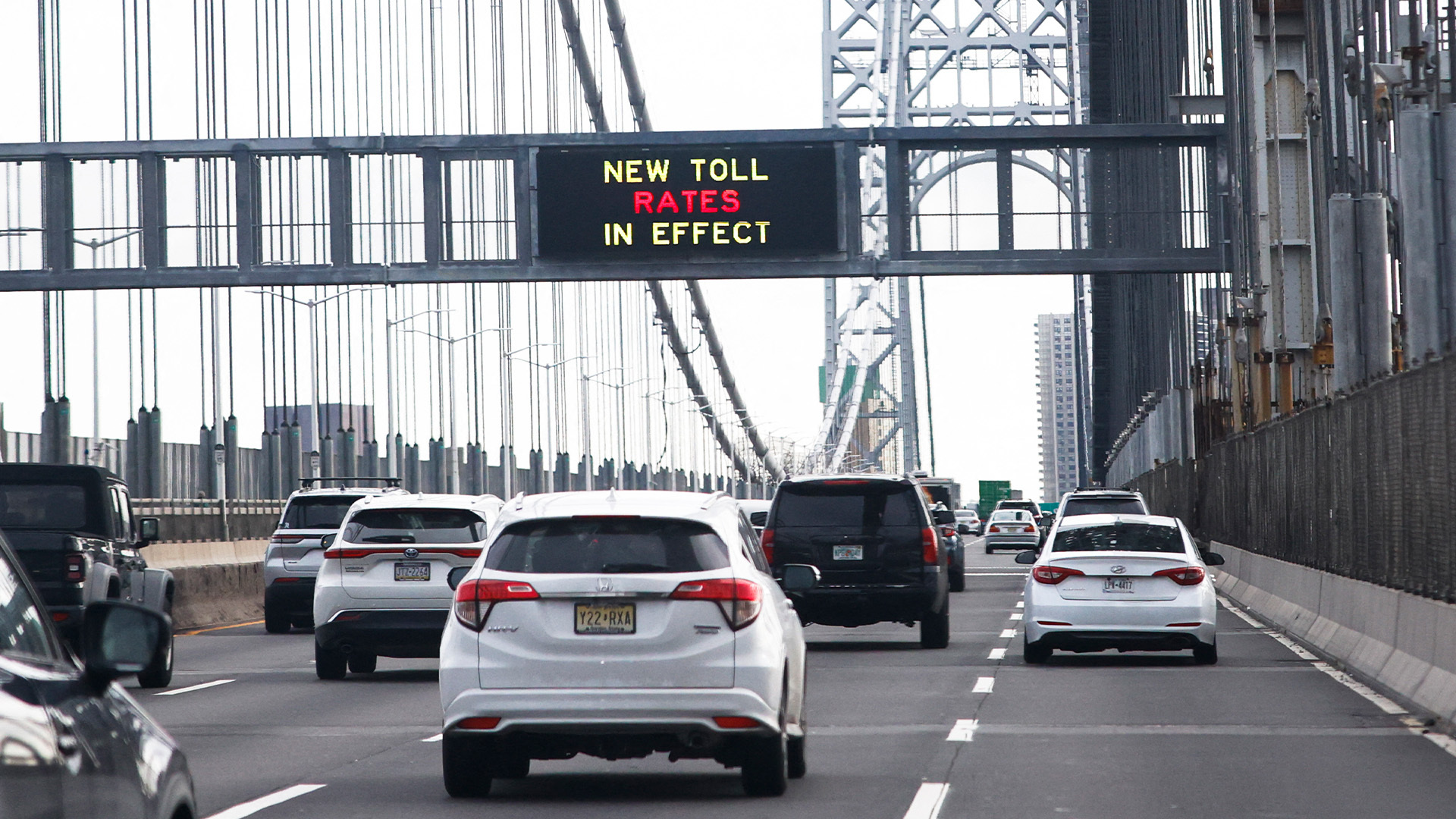
Early congestion pricing numbers show NYC traffic reduced by 7.5%: MTA
By Craig Nigrelli (Anchor), Roey Hadar (Producer)
Data from the first week of New York City’s congestion pricing policy shows it’s having an effect. MTA, New York’s public transit authority, reported a small but noticeable dip in traffic on some of Manhattan’s busiest streets.
Media Landscape
See how news outlets across the political spectrum are covering this story. Learn moreBias Distribution
Left
Right
Untracked Bias
The program faced major pushback in New York and New Jersey. However, officials from the MTA said total traffic dropped by 7.5% compared to the same time last year, removing roughly 43,000 cars from traffic each day.

Download the SAN app today to stay up-to-date with Unbiased. Straight Facts™.
Point phone camera here
The program charges $9 for most cars entering Manhattan south of 60th Street, with a handful of highways exempted and a lower rate outside of rush hour. New York Gov. Kathy Hochul reduced the price from $15 following a public backlash.
An MTA spokesperson told the Associated Press that morning traffic into Manhattan in the Holland and Lincoln Tunnels, two of the busiest entries into the heart of the city, saw drops of 40% or more.
It’s unclear whether the city’s public transit had more riders, but express bus routes moved faster. One route from Brooklyn into Manhattan crossing the Williamsburg Bridge saw its travel time reduced by 28%.
The MTA’s chairman told The New York Times, “There’s so much evidence that people are experiencing a much less traffic-congested environment. They’re seeing streets that are moving more efficiently, and they’re hearing less noise, and they’re feeling a less tense environment around tunnels and bridges.”
However, while the early data shows signs of success, MTA officials say it will take longer than one week to determine if the program is successfully reducing traffic and shifting drivers to public transit.
CRAIG NIGRELLI: Data from the first week of New York City’s congestion pricing policy shows the policy had an effect: a small but noticeable dip in traffic on some of Manhattan’s busiest streets.
The program faced major pushback in New York and New Jersey. But officials from the MTA, New York’s public transit authority, said total traffic dropped 7.5% compared to the same time last year, taking about 43,000 cars a day out of traffic.
The program charges $9 for most cars entering Manhattan south of 60th Street, with a handful of highways exempted and a lower rate outside of rush hour. New York Governor Kathy Hochul reduced the price from $15 in response to public outcry.
An MTA spokesperson told the Associated Press that morning traffic into Manhattan in the Holland and Lincoln Tunnels, two of the busiest entries into the heart of the city, saw drops of 40% or more.
It’s not clear whether public transit as a whole in the city had more riders but express bus routes moved faster.
One route from Brooklyn into Manhattan crossing the Williamsburg Bridge reduced its travel time by 28 percent.
The MTA’s chairman told The New York Times, “There’s so much evidence that people are experiencing a much less traffic-congested environment. They’re seeing streets that are moving more efficiently, and they’re hearing less noise, and they’re feeling a less tense environment around tunnels and bridges.”
But while the early data shows signs of success, MTA officials say it will take longer than one week to figure out definitively if the program is a success at reducing traffic and shifting drivers to public transit.
For Straight Arrow News, I’m Craig Nigrelli.
And for all the latest updates on this and other top stories, download the Straight Arrow News app or visit SAN.com.
Media Landscape
See how news outlets across the political spectrum are covering this story. Learn moreBias Distribution
Left
Right
Untracked Bias
Straight to your inbox.
By entering your email, you agree to the Terms & Conditions and acknowledge the Privacy Policy.
MOST POPULAR
-
 Getty Images
Getty Images
Trump preparing to sign executive order to begin closing Department of Education
Read8 hrs ago -
 Getty Images
Getty Images
Republicans must cut Medicaid to fund Trump’s agenda, budget office says
Watch 2:109 hrs ago -
 Getty Images
Getty Images
Trump to revoke legal status for 240,000 Ukrainians as deportations rise: Report
Read11 hrs ago -
 U.S. Department of Energy
U.S. Department of Energy
Alaska’s $44B natural gas pipeline project attracts foreign interest
Watch 1:3911 hrs ago




